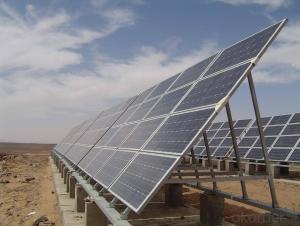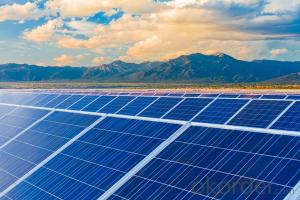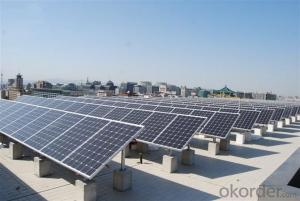UL and TUV Approved High Efficiency 45W Poly Solar Panel
- Loading Port:
- Shanghai
- Payment Terms:
- TT OR LC
- Min Order Qty:
- 10000 watt
- Supply Capability:
- 20000000 watt/month
OKorder Service Pledge
OKorder Financial Service
You Might Also Like
Item specifice
1.The Description of Product
Nowadays, with the shortage of the energy sources, people start to develop the solar energy, a new long lasting sources of energy which can be used almost anywhere. Why solar energy become so popular, we summarized the below some advantages of solar energy.
Type | CNBM Solar Polycrystalline Series |
Materials | Silicon |
Guarantee | 12 yrs free from defects in materials and workmanship No less than 90% within 10yrs and no less than 80% within 25yrs TUV(IEC61215&IEC61730), CE, UL |
Application | Photovoltaic/ solar/ green energy/ energy saving |
Descriptions | 1.High efficiency crystalline silicon solar cell. Even if under the weak light, the solar module can produce maximum power output. 2.Tempered glass (toughened glass): Anti-reflecting coating and high transmission rate glass increase the power output and mechanical strength of solar module. 3. EVA and TPT: Using high quality EVA and TPT to prevent destroying and water. 4. AI frame: Without screw, rner connection. 6 holes on the frame can be installed easily. 5. Junction box: Multi function junction box with water proof. 6. Long lifetime: ≥25 years; Less power decrease. 7. Good performance of preventing from atrocious weather such as wind and hails. 8. Resisting moisture and etching effectively, not effected by geology. 9. The certificate issued by international authority: UL, TUV, IEC, CE.
|
2.Production Line
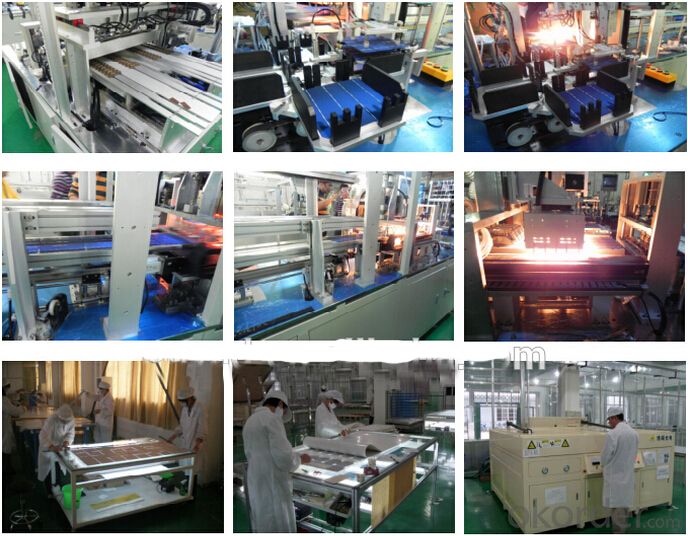
3.The Pictures of Solar Panels

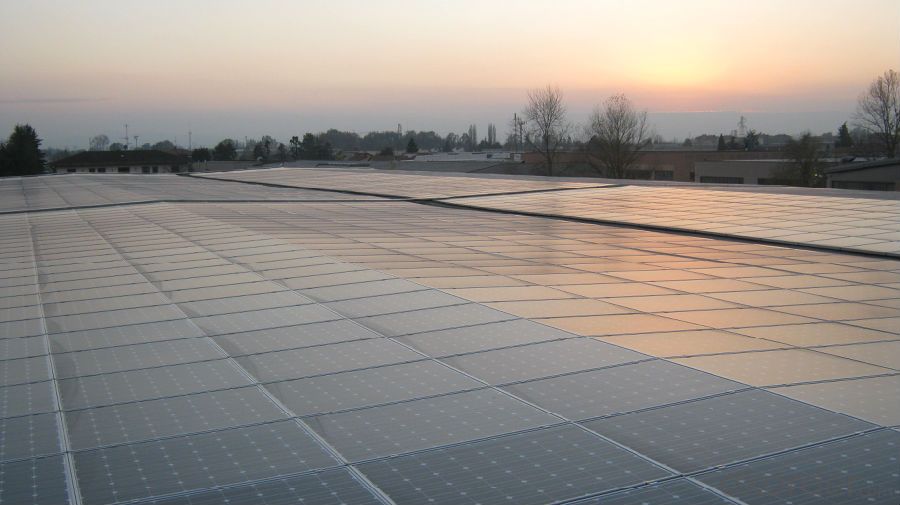
4.Packing
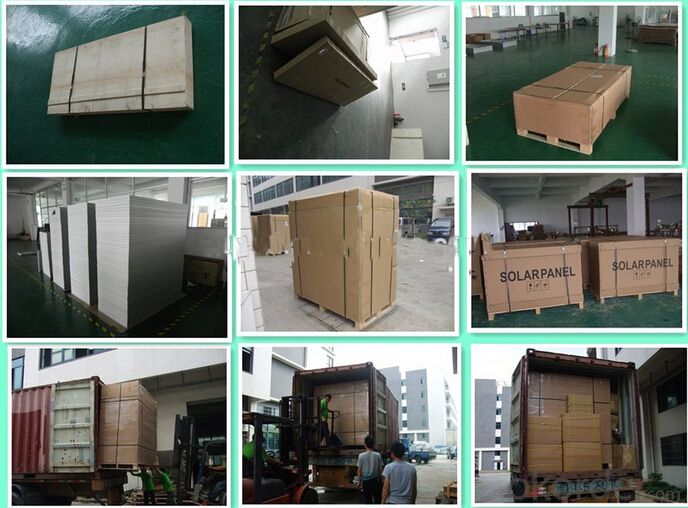
5.FAQ
1). How to buy?
Contact with the talking button.
2).Can you do OEM for us?
Yes, we can.
3). How long can we receive the product after purchase?
In the purchase of product within three working days, We will arrange the factory delivery as soon as possible. The perfect time of receiving is related to the state and position of customers. Commonly 7 to 10 working days can be served.
4). Can we visit your factory?
Sure, welcome at any time is believing.
- Q:Can solar panels be installed on agricultural irrigation systems?
- Yes, solar panels can be installed on agricultural irrigation systems. They can provide a sustainable and efficient source of energy to power the irrigation system, reducing reliance on traditional electricity sources and reducing operational costs for farmers. Additionally, solar panels can help farmers become more environmentally friendly by reducing carbon emissions associated with irrigation.
- Q:i want to charge my mytouch 3g with solar panel(s) it has a 500mah 3.7v 4.4wh batterieswhat do i need to charge it can i use RadioShack 0.5W Solar Panel 4.5V or RadioShack? W Solar Panel 4.5V
- see u have to make ur own ckt for this ur solar panel generate DC if u want to charge ur phine then its convenient way to harge with ur charger for this do this search for net to convert DC-AC convertor since ur charger work on AC so when ur solar panel generate DC it convert into AC that will charge ur phone in ckt u need this thing filter and amp ie the DC voltage come from solar panel 2 DC to AC convertor 3 AMP for AC 4 filter for AC and u are done....... fine ckt from google.....
- Q:Can solar panels be installed in rural areas?
- Yes, solar panels can be installed in rural areas. In fact, rural areas often have more space and sunlight, making them ideal for solar energy generation. Installing solar panels in rural areas can provide access to clean and renewable energy, reduce reliance on fossil fuels, and bring electricity to remote communities that are not connected to the grid.
- Q:Can solar panels be used in areas with high levels of wildlife activity?
- Yes, solar panels can be used in areas with high levels of wildlife activity. However, it is important to take certain precautions to minimize potential impacts on wildlife. This can include implementing proper installation techniques, such as avoiding nesting sites or wildlife corridors, and using deterrents to prevent wildlife from damaging the panels. Additionally, incorporating habitat-friendly designs and partnering with local conservation organizations can help mitigate any potential negative effects on wildlife populations.
- Q:Can solar panels be used to power an entire office building?
- Yes, solar panels can be used to power an entire office building. By installing a sufficient number of solar panels on the roof or surrounding areas, an office building can generate enough electricity to meet its energy needs. Additionally, by integrating battery storage systems, excess solar energy can be stored and used during non-sunlight hours, ensuring continuous power supply.
- Q:I need to know how solar photovoltaic panels work. Anyone have a good explanation?
- Hey E Girl, photovoltiac panels are pretty simple. They start with a solid block of silicone, and shave thin layers off of them, called wafers. Once you have about 72 of them, you take half of them and dope them with boron, then the other half are doped with phosphorous. Once that's done, they take one each phosphorous and boron wafer, and glue them together with a special conductive epoxy glue, and attach a wire to each wafer. When the two glued wafers are exposed to the sun, a reaction occurs that forces free electrons from the silicone particles from one wafer onto the other, and a voltage is generated between them, about /2 volt to be exact. Once all 36 pairs are glued together, they are wired in series, connecting the phosphourous wafer from one to the boron wafer on the next, and so on. If you start with 72 wafers, you'll have 36 pairs glued together when you are done. At /2 volt each, that makes a 8 volt panel, which is used to charge a 2 volt battery. The charging source always has to have a few more volts than the battery. These 36 pairs of cells are then arranged on some kind of back board, glued down, covered with acrylic glass and mounted in a frame. There are some great websites you can go to for more info, I will list some below. Did you know that there are over 00,000 homes and businesses in the US alone that use some level of solar power to operate their electrical systems? That's good news. We actually live in one of those homes, it is powered by both the wind and sun and heated with solar and wood. I hope this answers your question, good luck, and take care, Rudydoo
- Q:Can solar panels be installed on a swimming pool?
- Yes, solar panels can be installed on a swimming pool. In fact, many pool owners choose to install solar panels to heat their pools and reduce energy costs. The panels absorb sunlight and convert it into energy to heat the water, extending the swimming season and making the pool more comfortable for users.
- Q:Solar panels are all divided into these squares, forming a grid like pattern. Is it possible to have a single piece of solar panel?
- Solar cells are semiconductor devices like computer chips. Current manufacturing methods create small squares of semiconductors. Companies are researching ways to make thin film solar cells that can be painted on or manufactured in large, possibly flexible sheets, but so far the technology to do that is still more expensive than making little squares and then assembling them into big panels. That may change in the near future, but I can't be sure.
- Q:Can solar panels be damaged by hail or strong winds?
- Yes, solar panels can be damaged by hail or strong winds. Hailstones can cause cracks or dents on the surface of solar panels, affecting their efficiency. Likewise, strong winds can potentially dislodge or break the panels, leading to their damage or complete destruction. It is important to ensure proper installation and consider protective measures, such as using impact-resistant glass or adding extra support structures, to minimize the risk of damage from hail or strong winds.
- Q:Can solar panels be installed in areas prone to hurricanes or tornadoes?
- Yes, solar panels can be installed in areas prone to hurricanes or tornadoes. However, additional precautions and engineering considerations need to be taken to ensure their durability and resistance against strong winds and potential impact from debris. This can include using reinforced mounting systems, implementing proper anchoring techniques, and selecting panels that meet stringent wind load requirements.
1. Manufacturer Overview |
|
|---|---|
| Location | |
| Year Established | |
| Annual Output Value | |
| Main Markets | |
| Company Certifications | |
2. Manufacturer Certificates |
|
|---|---|
| a) Certification Name | |
| Range | |
| Reference | |
| Validity Period | |
3. Manufacturer Capability |
|
|---|---|
| a)Trade Capacity | |
| Nearest Port | |
| Export Percentage | |
| No.of Employees in Trade Department | |
| Language Spoken: | |
| b)Factory Information | |
| Factory Size: | |
| No. of Production Lines | |
| Contract Manufacturing | |
| Product Price Range | |
Send your message to us
UL and TUV Approved High Efficiency 45W Poly Solar Panel
- Loading Port:
- Shanghai
- Payment Terms:
- TT OR LC
- Min Order Qty:
- 10000 watt
- Supply Capability:
- 20000000 watt/month
OKorder Service Pledge
OKorder Financial Service
Similar products
New products
Hot products
Hot Searches
Related keywords
